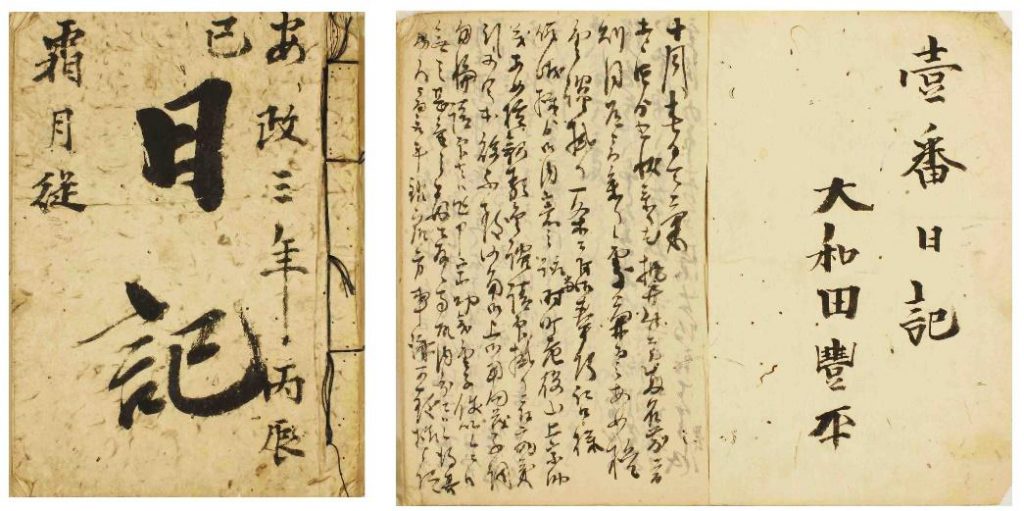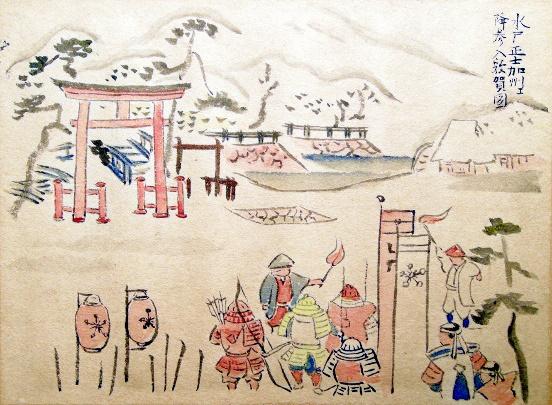COLLECTION OF THE MUSEUM
Documents of the Owada Family (Owada Shobe Monjo) 大和田荘兵衛文書
Owada Shobe (1857—1947) belonged to a mercantile family. This family was relative of Owada Shoshichi’s family in the late Edo period. The documents in the collection include those pertaining to the merchant ship Kitamae-bune, and the diary of Shobe, indicating the lifestyle of local traders in Tsuruga.
Documents of Shibata Family ( Shibata Gonemon Monjo ) 柴田権右衛門文書
Shibata Gonemon was a wealthy farmer in Tsuruga during the Edo period. His residence and garden Shibatasi Teien are designated as “Places of Scenic Beauty” by Japan’s Agency for Cultural Affairs, and their maintenance is carried out by the city of Tsuruga. Documents such as the map of rice fields and an explanation about land tax,(Nengu), tells us about the farming system of the area.
Others
– Documents of Iwatani Family (Iwatani Sueo Monjo) 岩谷末雄文書
– Documents of Itoya Family (Itoya Zenbe Monjo) 糸屋善兵衛文書
– Diary of Owada Family in 1856 (Owada Shobe Nikki) 大和田荘兵衛日記
DEPOSITED COLLECTIONS
Documents of Kehi Jingu Shrine (Kehi Jingu Monjo) 気比神宮古文書
The people of Tsuruga call the Kehi Jingu Shinto shrine the shrine of “Kei san.” In ancient times, the shrine had a lot of field territories and was ranked one of the first classes of Shinto shrine by Japanese government, and the shrine was named as Shoitii Kunittou 正一位勲一等 at the time.
The buildings of the shrine and some documents were destroyed in natural disasters and wars. Almost all papers that exist today are written after the Middle Edo period (about 1690-1780), including the History of Kehi Jingu Shrine (Kehi Jingu Shaki) in 1761 and the Map of Kehi Jingu (Kehi Jingu Kozu).
Others
-Documents of Tenguto
-Materials of Haiku


